If you regularly monitor your cardio fitness levels (VO2 Max) using the Health app on your iPhone and suddenly see your score dropping (or rising,) you’re probably wondering why.
First, don’t stress out! Changes in cardio fitness scores are normal and happen for various reasons, and many of those are entirely out of your control. So don’t hit the panic button and suddenly up your workouts.
Instead, focus on the big picture and look at overall patterns or things, like updating to a new device or updating your device’s software version, switching from one type of regular workout to another, or even hitting a milestone birthday to help explain this sudden change in the Health app’s cardio fitness score.
Contents
- 1 Check that all your personal health information is accurate
- 2 Make sure that your watch isn’t power-saving during workouts
- 3 Look at your privacy and location settings
- 4 Use the Workout app on your Apple Watch
- 5 Did you recently update to a new iPhone or Apple Watch model or update the software (iOS and watchOS) for your paired iPhone and Apple Watch?
- 6 Have you changed your workouts?
- 7 Try wearing your Apple Watch when you sleep
- 8 Re-calibrate your Apple Watch
- 9 How does the Apple watch calculate cardio fitness?
- 10 Additional factors that can change your cardio fitness score
- 11 How to increase your Vo2 max accuracy on the Apple watch
- 12 Common Questions
- 13 Summary
Related reading
- Cardio Fitness levels feature on Apple Watch, here’s what you should know
- Train smarter for aerobic fitness: FatMaxxer vs. Runalyze
- Low VO2 max score on fitness tracker? Here’s what you should know
- Is your Apple Watch Cardio Fitness (VO2 Max) not showing any data? Let’s fix it
- New Study finds Cardiorespiratory fitness (VO2 Max) measured from activity data on your iPhone to be quite accurate
Check that all your personal health information is accurate 
The Health app gauges your cardio fitness based on factors like your age, gender, weight, height, health conditions, and even medication use.
So, if you haven’t looked at your health profile in a while, it’s time to review and update it, especially if you lost or gained weight or are using a new medication.
This is especially true if you take medications to reduce your maximum heart rate. You need to add this information to a more accurate cardio fitness (VO2 max) estimate.
- Open the Health app on your iPhone and tap the Summary tab.
- Tap your profile picture or icon.

- Choose Health Details and review the current information. Ensure your birthdate is listed and accurate and that all other information is correct.

- To make changes, tap Edit to update or add information. If you use a beta-blocker or calcium channel blocker, make sure you add it under Medications That Affect Heart Rate.
- For more on VO2 Max and the impact of beta blockers, see this Apple white paper.
- To save these changes, tap Done.
- Return to the Health app’s Browse tab and select Body Measurements to update your weight and height.

If you recently hit a milestone birthday and entered a new decade like your forties or fifties and so forth, the ranges for each cardio fitness category adjust so, you might see a change to your overall fitness level–usually a boost! 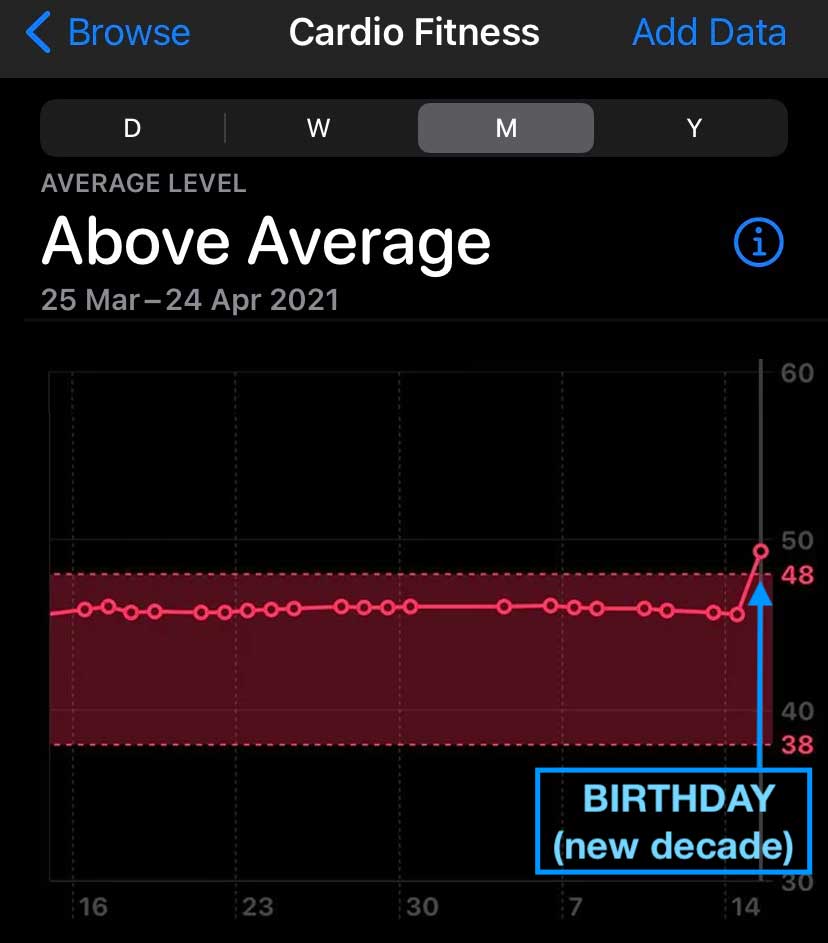
Make sure that your watch isn’t power-saving during workouts
Your Apple Watch has an option, either Low Power Mode or Power Savings Mode, that helps you save battery when working out.
Unfortunately, when this feature is on, it also turns off workout alerts, splits and segments, and current pace. It also turns off the Always On display and cellular connectivity on models that offer those features.
- When in Workout Low Power Mode (watchOS 9 and above), the watch measures your active heart rate during exercise but turns off background heart rate and blood oxygen measurements and heart rate notifications. Other notifications, including emergency alerts, are often delayed, and it can limit cellular and Wi-Fi connections.
- When in Workout Power Savings Mode (watchOS 8 and below), the built-in heart rate sensor is also turned off until you end your workout.
Since calculating cardio fitness depends on heart rate data, we recommend you don’t use these power savings modes on your watch when using the Workout app.
- On your Apple Watch, tap Settings > Workout app. Or, on your iPhone, open the Watch app > My Watch > Workout.
- Turn Low Power Mode (previously called Power Saving Mode) off.

- Newer watch models, like the Ultra, also have another Workout savings mode called Fewer GPS and Heart Rate Readings. Turn this off.

This setting takes fewer GPS and heart rate readings when you use the Workout app and choose outdoor walking, running, or hiking.
Verify your watch’s battery has a reasonable charge available
Another thing that can impact your cardio fitness scores is when you work out with your Apple Watch in power reserve or when the watch has less than 25% battery remaining.
So make sure your watch has at least 25% of its battery remaining before heading out to exercise.
Look at your privacy and location settings
Let’s make sure that your Apple Watch captures all the data it needs to accurately calculate your cardio fitness score (VO2 Max.)
- On your paired iPhone, open the Watch app > My Watch tab.
- Tap Privacy.
- Toggle on Heart Rate, Respiratory Rate, and Fitness Tracking. If these are already on, toggle them off, wait a few seconds, and toggle them back on.

- Go to the Settings app on your iPhone and choose Privacy > Location Services.
- Select Apple Watch Workout and choose While Using the App and toggle on Precise Location.

- Go back to Privacy > Location Services and tap Maps. Choose While Using the App or Widgets and toggle on Precise Location.
- Return to Privacy > Location Services and tap System Services. Toggle on Compass Calibration and Motion Calibration & Distance.

- Go back to Privacy and choose Motion & Fitness. Toggle on Fitness Tracking and the Health app (and any third-party fitness apps you use.)

Use the Workout app on your Apple Watch
If you don’t usually use your watch’s Workout app, try using the Workout app for a few weeks. And if you typically allow the Workout app to auto-detect your workout, try starting your workout manually instead. 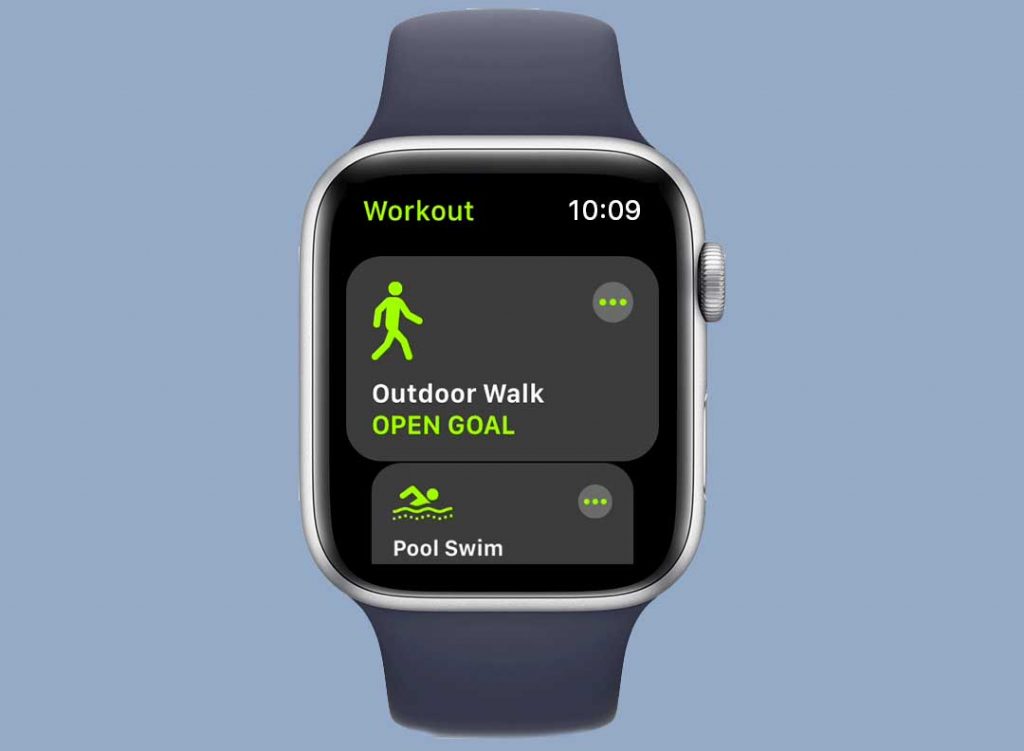
When you begin a workout, make sure you wait for the 3-second countdown to complete before beginning and then tap the End button as soon as your workout is done. 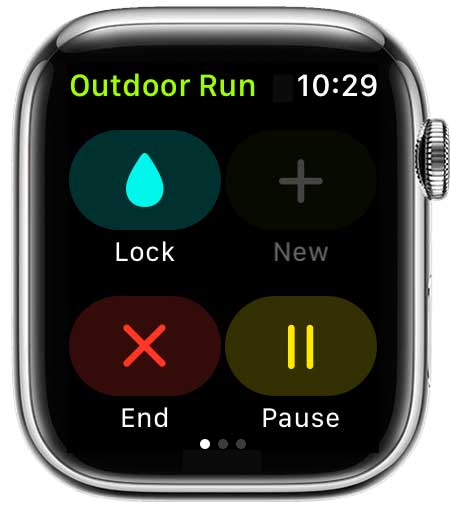
If you need to take a break during your workout, press the pause button and when ready to start again, press the resume button.
Since many people (including me) forget to end our workouts, we recommend turning on the End Workout reminder. To turn this setting on, open the Settings app on your Apple Watch and choose Workout > End Workout Reminder. 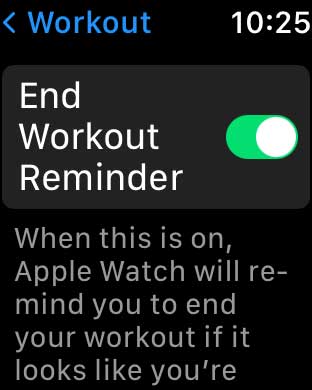
Did you recently update to a new iPhone or Apple Watch model or update the software (iOS and watchOS) for your paired iPhone and Apple Watch?
Apple’s cardio fitness level or Vo2 max score is an estimation that’s created by an algorithm that uses your heart rate data and compares that to population averages for your age and gender.
That algorithm is regularly updated via software updates for your Apple Watch (watchOS) and iPhone (iOS.)
Some of these changes may be due to an updated cardio fitness or heart rate tracking algorithm. For example, watchOS 7 included a major update to the algorithm that estimates cardio fitness level by VO2 max scores.
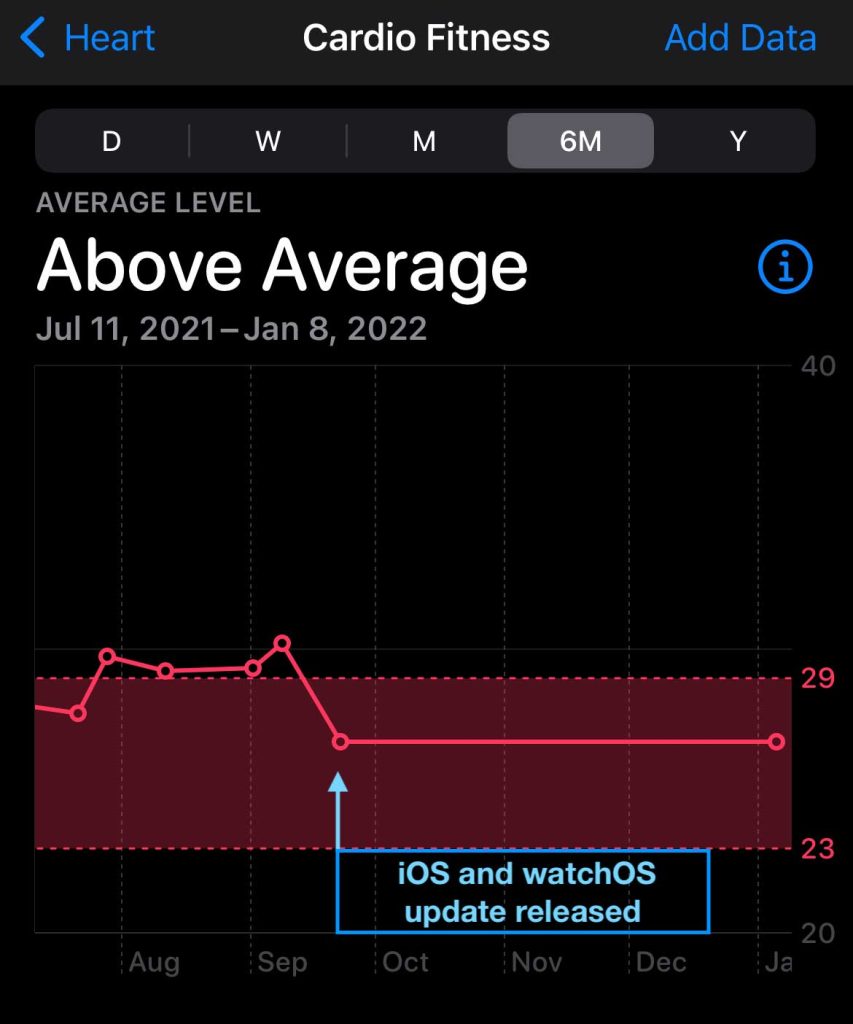
If you see a sudden change in a matter of days, check if that corresponds to a software update. If so, the best action plan is to wait and watch. Usually, these algorithm updates take some time to show the most accurate data.
Similarly, if you changed from an older iPhone or Apple Watch model to a newer model, the sensors and hardware on your new Apple Watch are likely more sensitive than your older model. So that could account for the change in your cardio fitness score.
In either case, the best advice is to continue doing what you do and wait for the scores to settle in.
Have you changed your workouts? 
Apple’s cardio fitness score tracks workouts that push your cardiovascular and respiratory systems. At this time, Apple includes outdoor walks, runs, or hikes as the best measures for cardio fitness.
So, if you recently switched to a different type of workout like strength training, yoga, pilates, etc., your cardio fitness score may suddenly drop and change. In this case, don’t be discouraged at the change–it does not indicate that you are not healthy or fit!
If you decide to see your score return to “normal,” add in additional workouts each week, like outdoor running, walking, or hiking, using the Workout app.
Has your workout intensity changed?
Your cardio fitness estimate might be low if your exercise intensity changed in ways that your Apple Watch can’t detect accurately.
For example, your cardio fitness score may not be accurate if you carry a lot of additional weight when exercising, beyond body weight, like a heavy backpack or water bladder, baby, or child. 
Similarly, using an assistive device like a walker or pushing a stroller may also decrease the accuracy of cardio fitness scores.
Finally, if you recently changed where you work out and walk or run on the ground, such as sand or up/down a hill, that can change your cardio fitness scores. Apple recommends you exercise on relatively flat ground with a grade of less than 5 percent incline or decline.
Are you overtraining and not recovering?
If you work out intensely every day, you may be overtraining and not allowing your body to recover from your workouts.
So make sure you allow rest time in your workouts for heart rate recovery AND use recovery days in your workout schedule.
Try wearing your Apple Watch when you sleep 
Your Apple Watch uses your resting and sleeping heart rate information in its cardio fitness algorithm. So, if you aren’t wearing your watch to bed and tracking sleep, give that a try and see if your scores change.
Your cardio fitness score calculation depends on your resting heart rate (RHR), and wearing your watch when you sleep helps you get a more accurate score.
The more you wear your watch, the better the watch and Health app performs. So try wearing your watch all day and night and charging when you bathe or when you engage in minimal-effort activities, like watching TV.
Re-calibrate your Apple Watch
Calibrating your watch helps improve your watch’s measurement accuracy for distance, pace, and calories.
Another benefit of calibrating your watch is that it helps your watch and your iPhone learn your personalized fitness level and improves accuracy when GPS is limited or unavailable.
- From your iPhone > Watch app > My Watch tab.
- Choose Privacy.
- Scroll down to choose Reset Fitness Calibration Data.

- Put on your watch and open the Workout app. Tap Outdoor Walk or Outdoor Run.
- Go for a 20-minute outdoor run or walk on a flat surface–try to maintain a constant speed on your walk or run.
Since this resets all your past fitness data, wait a few weeks for your cardio fitness score to show updates.
How does the Apple watch calculate cardio fitness?
Apple’s cardio fitness score is the same as your Vo2 max score, which is the maximum volume of oxygen an individual can extract from inhaled air. This cannot be detected directly by your Watch. It is calculated via an algorithm that uses your heart rate data.
Apple’s cardio fitness level or Vo2 max score is a predicted metric, meaning that it is an estimation that uses an algorithm calculated with heart rate changes during outdoor workouts. The algorithm also uses your maximum heart rate value.
Your first workouts won’t generate an estimate. It can take at least 24 hours wearing your Apple Watch, followed by several workouts and passive measurements with your Apple Watch before you receive an initial cardio fitness score.
Your VO2 max score is created after walking, running, or hiking outdoors on relatively flat ground (with a grade of less than 5 percent incline or decline). Your workout should take at least 20 minutes to get reliable data.
You need a GPS signal, heart rate signal, and exertion effort of approximately a 30 percent increase in the range from resting heart rate to max heart rate. You don’t need to achieve a maximum heart rate to receive a score, but an idea of your maximum heart rate is required to estimate your cardiovascular score.
To learn more about how Apple calculates VO2 Max and see its validation study results, see this May 2021 Apple white paper, “Using Apple Watch to Estimate Cardio Fitness with VO2 max.”
Additional factors that can change your cardio fitness score 
Pregnancy
Normal physiological changes associated with pregnancy may lead to inaccurate Vo2 estimates.
Increases in heart rate outside of exercise and exertion
Other factors that increase heart rates, such as dehydration, caffeine, extreme heat, or recent transition to high altitudes, can also lead to underestimates.
Health conditions that affect your heart rate
If you have chronotropic incompetence, which is a condition where your heart rate doesn’t appropriately increase to compensate for demand. It occurs in approximately 30 to 80 percent of patients with heart failure.
Chronotropic incompetence has also been linked to chronic obstructive pulmonary disease (COPD), lupus, and other autoimmune conditions.
In addition to chronotropic incompetence, other medical conditions can also decrease the accuracy of VO2 max estimates, such as pain, arrhythmias, pacemakers, cardiac-assist devices, and peripheral arterial disease.
Also, medical conditions that significantly affect your ability to walk include skeletal or neuromuscular diseases (for example, multiple sclerosis or cerebral palsy). If you have any of these conditions, you may receive overestimates of your VO2 max.
Skin perfusion
Skin perfusion (how much blood flows through your skin) varies significantly from person to person and can also be impacted by the environment. If you’re exercising in cold weather, the skin perfusion in your wrist might be too low for the heart rate sensor to get a reading.
Permanent or temporary changes to your skin
Tattoos can impact heart rate sensor performance. Some tattoos’ ink, pattern, and saturation can block light from the sensor, making it difficult to get reliable readings.
Motion
Rhythmic movements, such as running, give better results than irregular movements, like tennis or boxing.
How to increase your Vo2 max accuracy on the Apple watch
VO2 max accuracy on Apple Watch can be increased by:
- Perform frequent outdoor workouts like running, walking, or hiking using the Workout app instead of a third-party app.
- Exercising at a higher intensity during workouts. Or try high-intensity interval training when running, walking, or doing other cardio exercises.
- Wearing your Apple Watch consistently throughout the day beyond a typical workout session. If possible, wear your watch at night and track your sleep.
- Keep your personal information up to date.
- Make sure that wrist detection is on. If Wrist Detection is off, your watch can’t take some background activity and heart rate readings (like resting and walking rates).
- Check your watch’s fit. Make sure your Apple Watch fits snugly on top of your wrist and that the heart rate sensor on the back is in contact with your skin.
- Choose the best workout. When you use the Workout app, choose the option that best matches what you’re doing. For example, if you’re running on a treadmill, choose Indoor Run. If your workout isn’t listed, choose Other.
- Calibrate your Apple Watch. You may need to calibrate your Apple Watch to improve the accuracy of your distance, pace, and calorie measurements.
Common Questions
How do I set up Cardio Fitness Levels and turn on notifications?
To set up Cardio Fitness Levels, make sure that you update your iPhone to the latest version of iOS and Apple Watch to the latest version of watchOS. 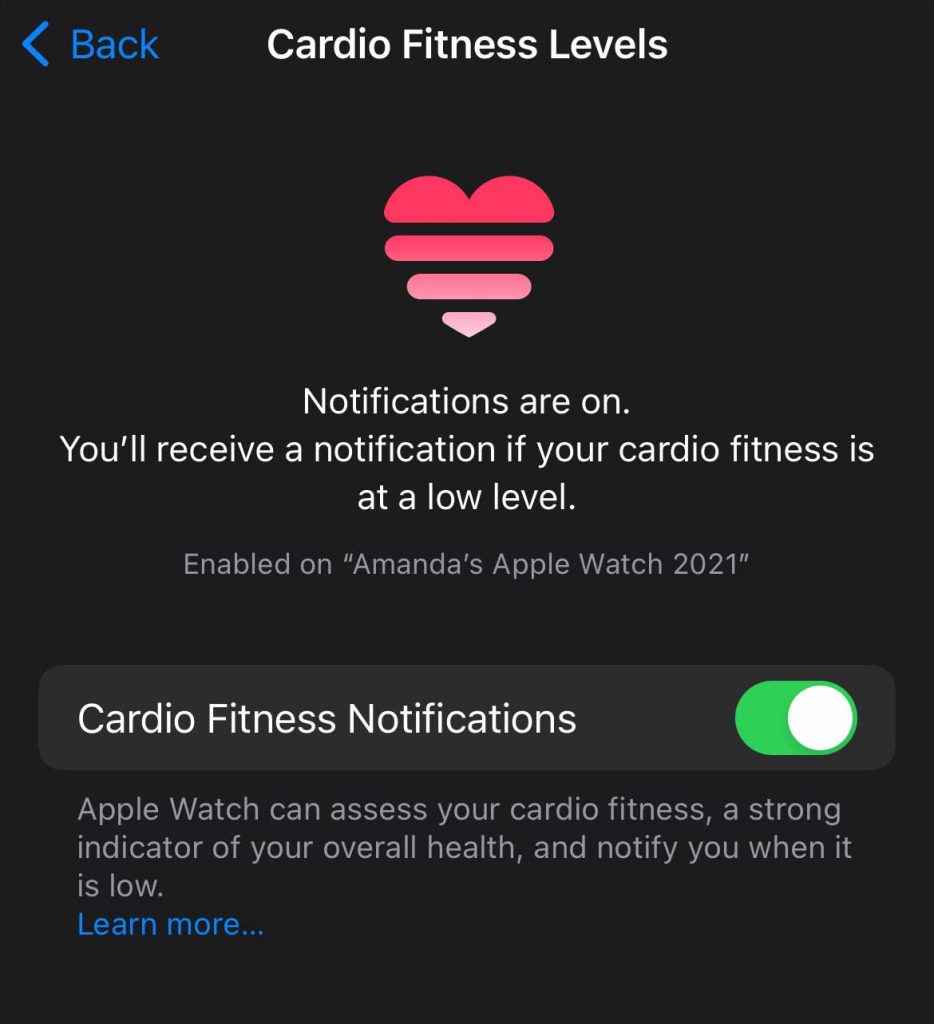
- From the Health app on your iPhone. Tap the Summary tab. Then, tap Set Up under Cardio Fitness. Follow the steps on-screen and turn on Notifications to receive a notification if your Apple Watch detects that your cardio fitness level is low.
How do I view my cardio fitness data in the Apple Health App? 
- Open the Health app on your iPhone. Tap Browse > Heart > Cardio Fitness. Choose D, W, or Y to view your average for the Day, Week, or Year.
Summary
Ultimately, it’s important to remember that Apple’s cardio fitness score is tied to population and gender + age-related averages.
Although that information is helpful, ultimately, you should look at your personalized data over time and not compare yourself too much to these averages.
Look for how you trend overall, rather than a short-term loss or gain in your score.
Also, if you feel good and healthy, that is more important than one data point.
Finally, remember that your Apple Watch isn’t a substitute for your doctor. If you are concerned about your cardio fitness suddenly dropping, contact your healthcare provider and ask them to run a stress test.
I hope that this article has helped you to understand how the Apple watch calculates your cardiovascular score and how you can make your score more accurate.
If you have any more questions or anything to add, please feel free to let us and everyone else know about it in the comments section down below!
If you liked this article, you can follow us on social media by using the social media buttons!

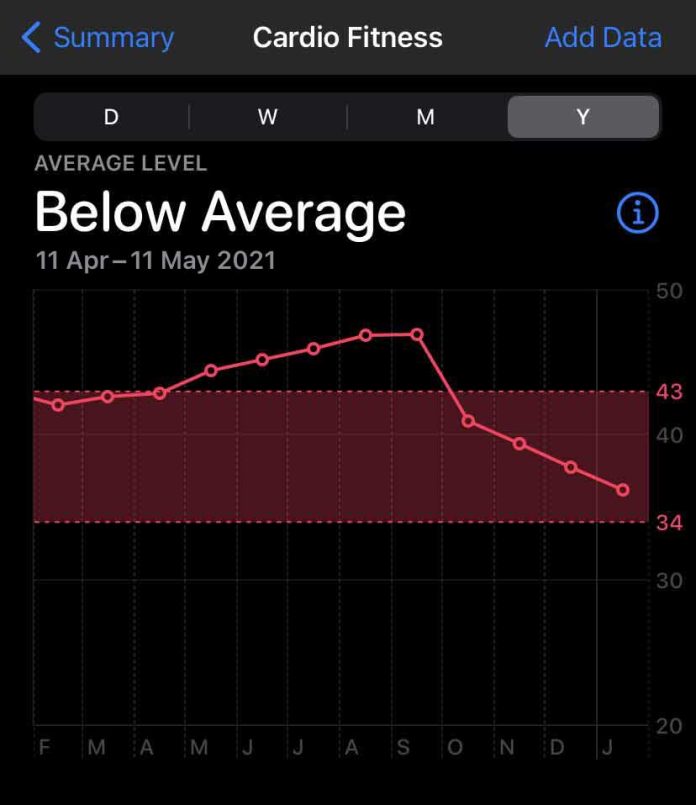
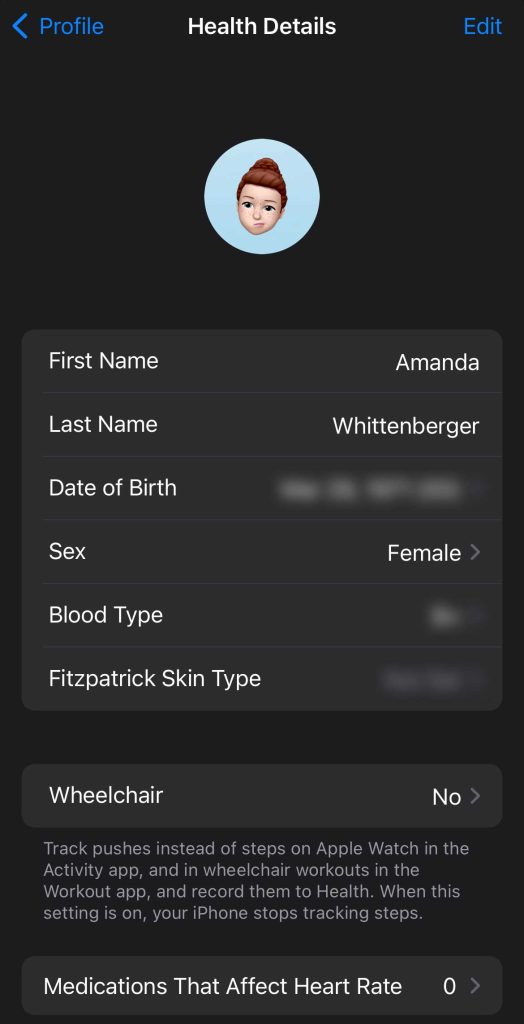
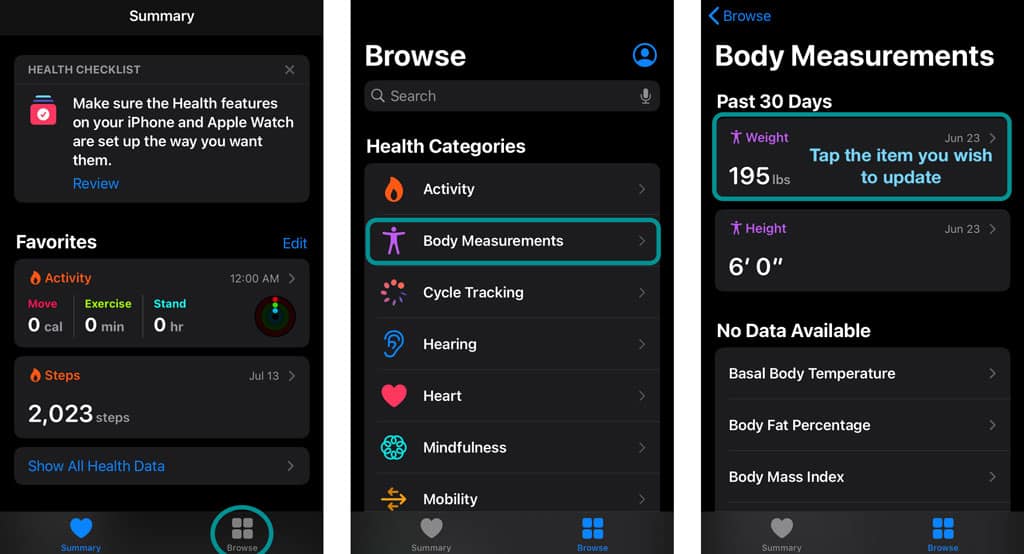
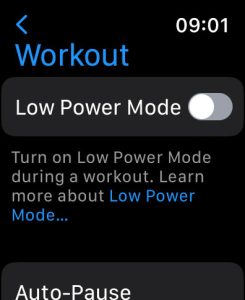

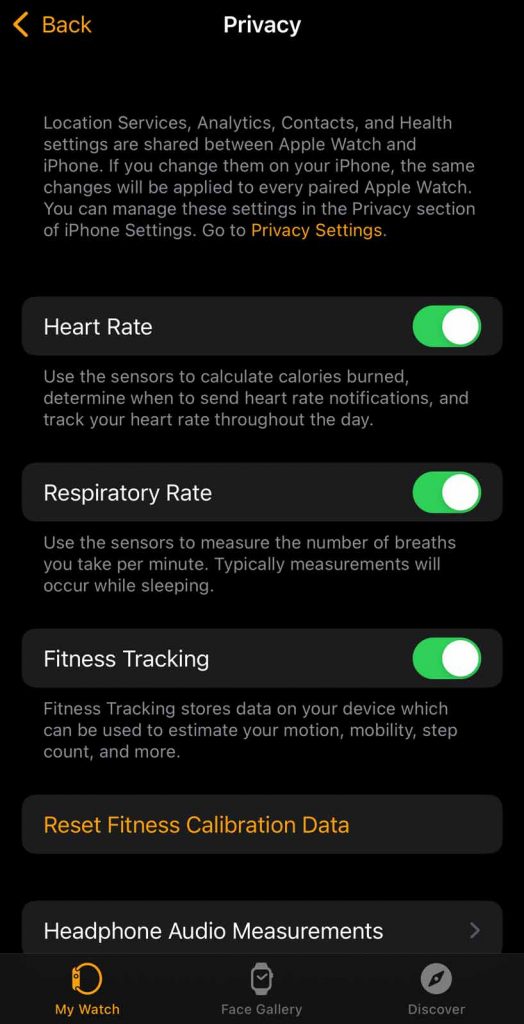
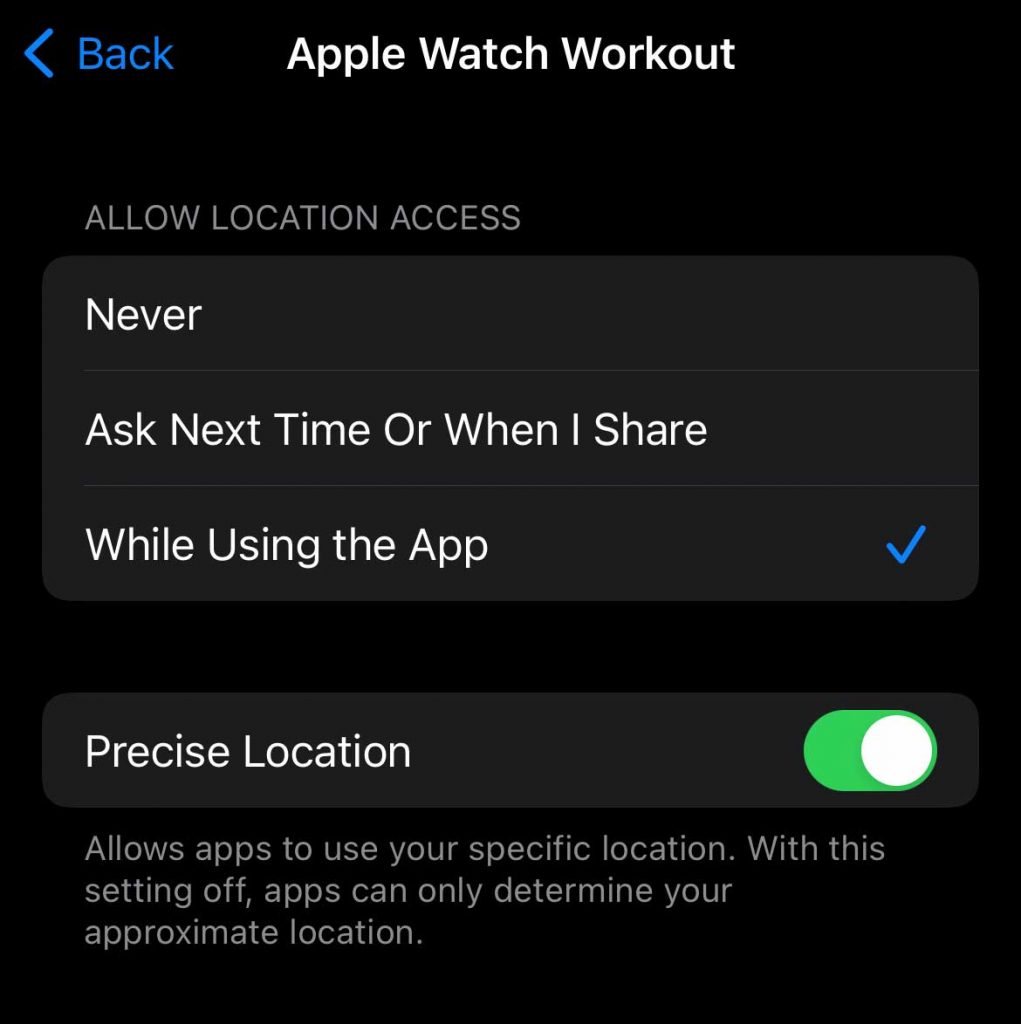
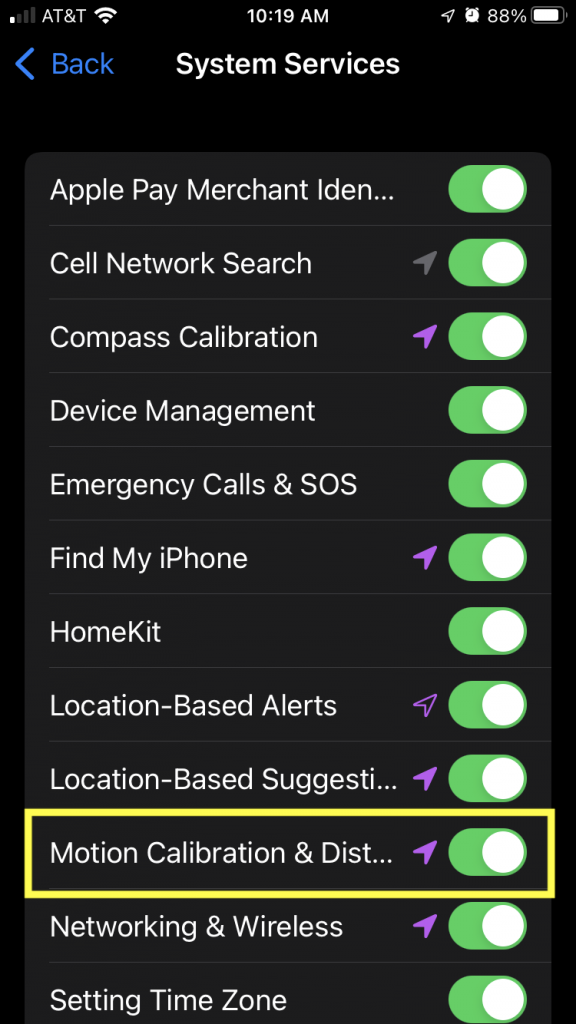
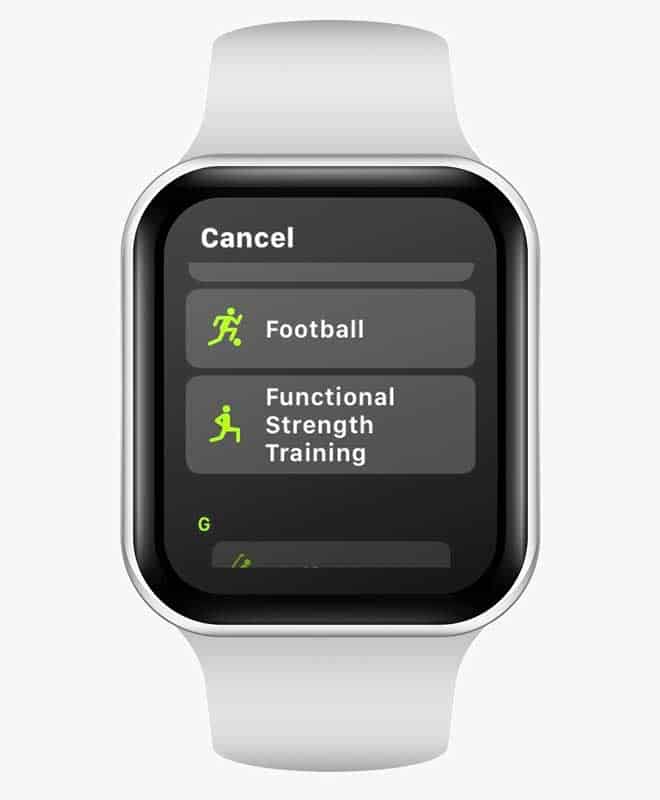
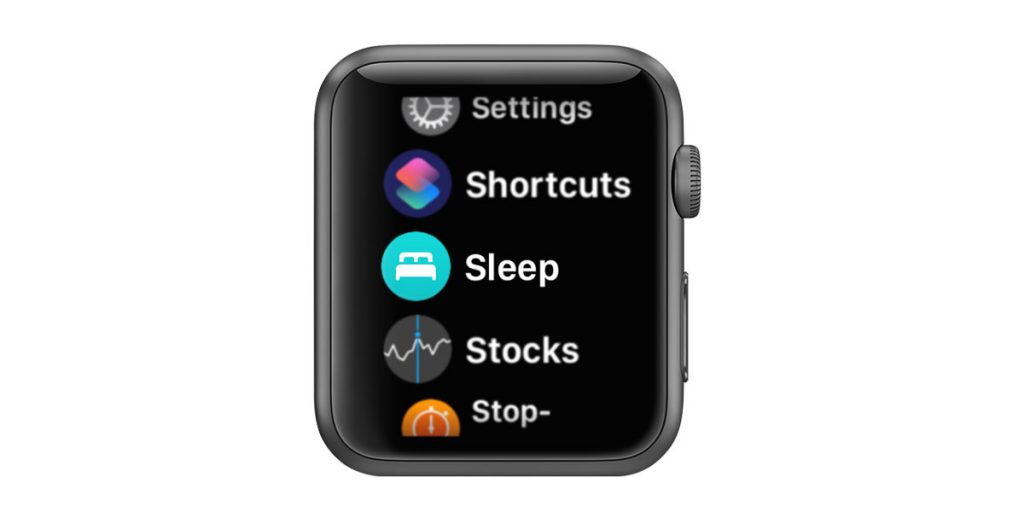
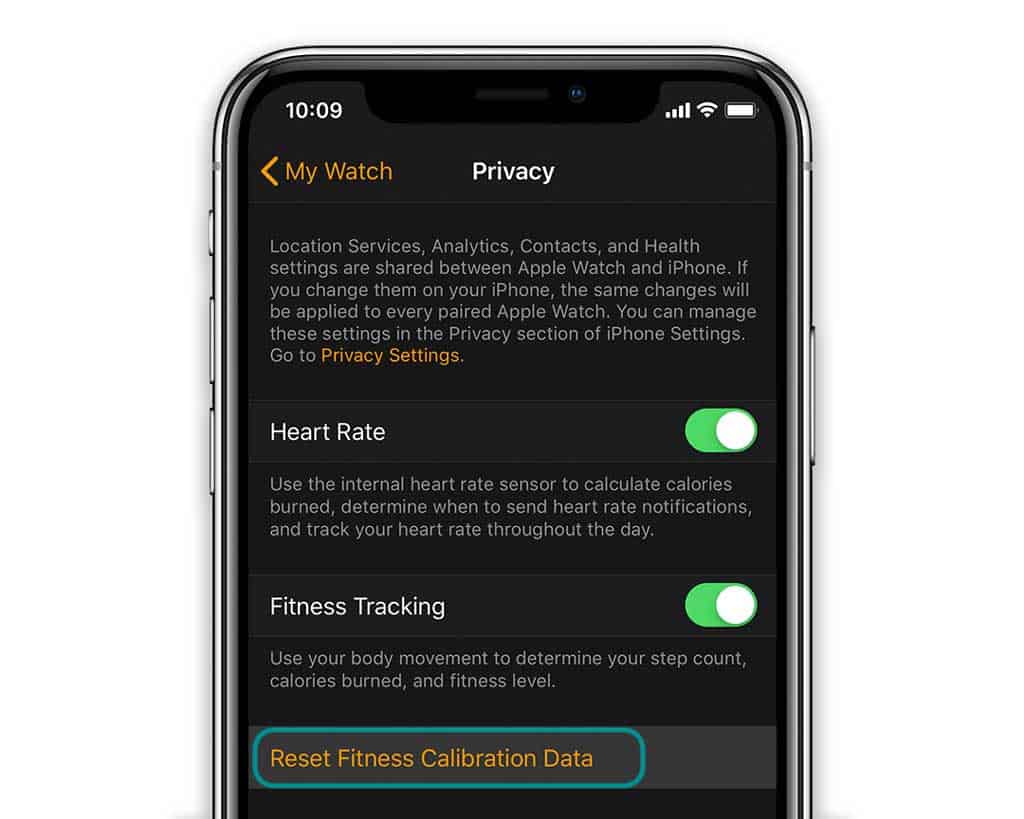
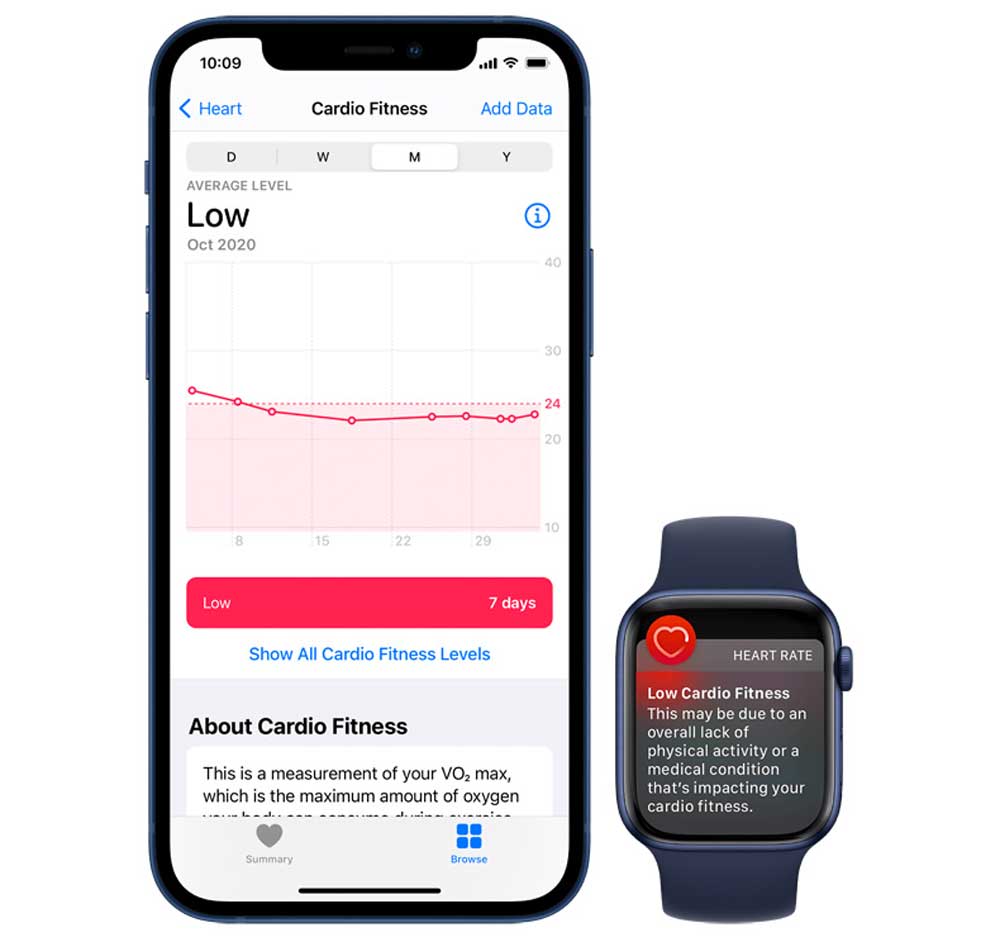
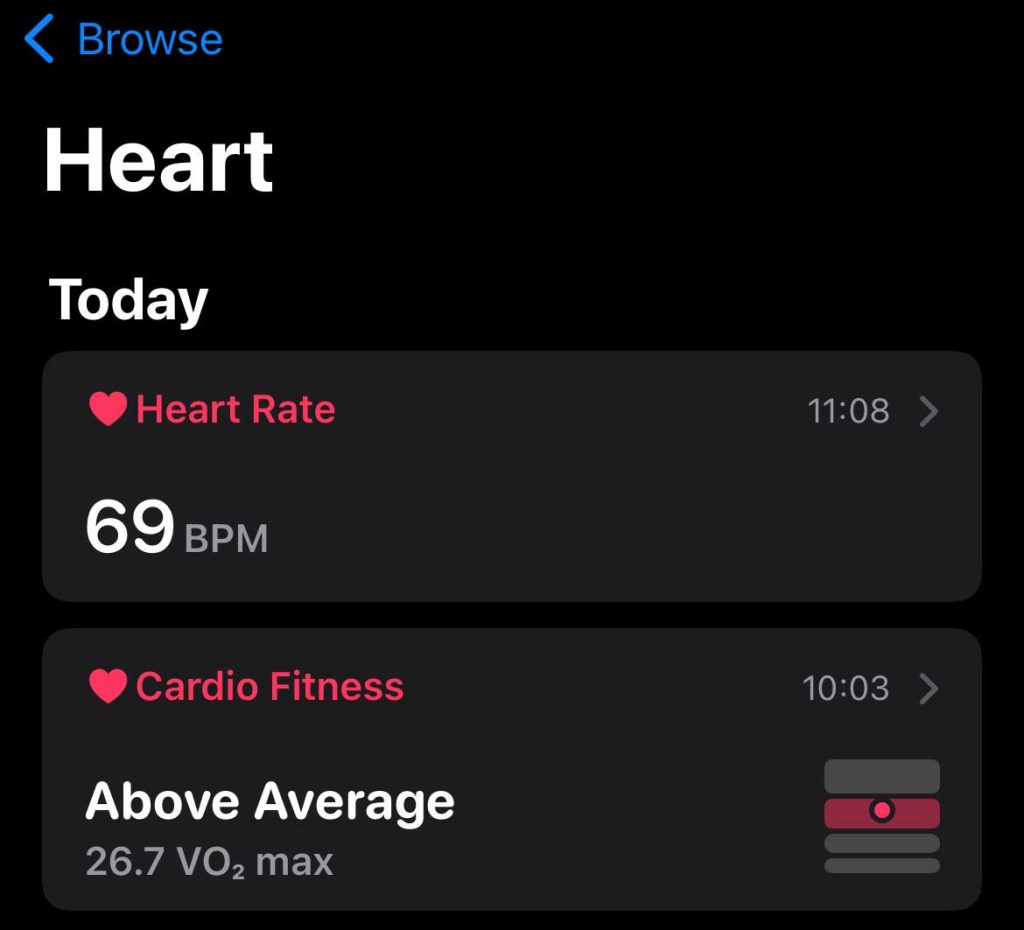

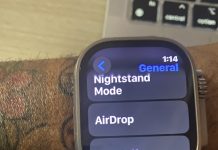




Good info on VO2 Max. First mention I’ve seen on pacemakers. The app should include both an indicator /checkbox for similar devices as well as a disclaimer.
My doctor prescribed 20mg of Propranolol daily to help me manage my blood pressure and anxiety. I’m a 42 yo male that runs a minimum of 10miles / week and strength trains. I also cycle to work and hike on the weekends. I am in the best shape of my life, but my VO2 Max score would suggest I’m at risk of dying any minute.
Here’s what Apple fails to disclose in all of its marketing in a clear, concise manner:
Apple Watch sensors have not been tested to pass any FDA premarket submission for clinical diagnostic use.
If you are experiencing your Apple Watch telling you that you have a low VO2 Max (at extremely high risk of cardiovascular failure), DO NOT rely on the Apple Watch sensors for accurate diagnostics.
Instead, contact your cardiologist and schedule a stress test with real, clinically-tested, and FDA-approved diagnostic equipment. And for now, treat whatever your Apple Watch sensors tell you as anecdotal at best.
Hi Robert,
You are correct. The Apple Watch is not a medical device and should never take the place of a doctor or healthcare provider.
I personally use my Apple Watch as a helpful friend…if it shows some large changes over time, I then follow up with my doctor.
Robert, you described my situation to a “T.”
I am in a similar age group as you and was prescribed Propranolol ER to deal with my anxiety disorder and elevated BP.
When I was on the Prop, my Apple watch showed me to be in the athlete level V02 max. I was working out 5-6 days a week, similar to you running one day, biking the next, and weight lifting the third day and repeat.
But yeah, due to it being a beta blocker, it would prevent my HR from going up beyond a certain level no matter how hard I exerted. So I guess apple watch thought I was an athlete who pushes hard, but HR stays manageable.
Fast forward, the Prop screwed my metabolism and led to weight gain no matter how much exercise I was doing.
So I spoke to my doctor, got off it, and went onto a Clonidine. The Clon does not artificially over-suppress my exercising HR.
So now I have exerted myself similarly as before or perhaps even more during exercise sessions, but since HR is normally rising as it should previously have, Apple Watch thinks I am screwed and gotten unhealthy because now, for my exertion, my heart seems to be working harder.
My take is that these tracking devices and our current state of tracking every little nuance of our bodies and health has screwed us royally.
Now we don’t live our lives; we obsess about every little detail, thus ruining the quality of our existence.
I feel like throwing my Apple Watch and deleting all these tracking apps and just going back to doing what I can (exercising, eating healthy, etc.) and then just leave the rest up to the universe.
I feel that ever since I got on wearing fitness trackers, my mental health has tanked.
I suffer from anxiety disorder with a current relapse. During this time my fitness deteriorated. I do the same amount of exercise as before.
Can my condition affect that score? Not gonna lie, that caused a huge anxiety attack
That dip shown in the first photo is actually probably software related. I have that exact same dip and so do many users on Reddit. Apple updated WatchOS and iOS in September 2021 and must’ve changed the algorithm or something.
Thanks Beth! Very helpful. I’ll read the article and keep looking into this.
Thanks so much for the additional info, Beth. I appreciate it and will look at the article and continue researching this.
Hi Lena and Beth. Thanks for an informative article.
I understand that taking certain meds which reduce your heart rate are factored into the cardio fitness algorithm.
How does the algorithm compensate for the effect the meds likely have have?
For instance, would the algorithm potentially report a result in the average range which otherwise would be reported in the low cardio fitness range but for the heart rate-lowering meds?
I’m taking beta blockers and ace inhibitors and get results in the low cardio fitness range. I’d like to understand the effect the meds have on that score. Thanks!
Hi Josh,
Apple did produce a paper about Apple Watch and VO2 Max in May, 2021 called “Using Apple Watch to Estimate Cardio Fitness with VO2 max,” which has some information about the algorithm’s accuracy for folks taking beta blockers.
Other than that bit, Apple does not share how its algorithm works, so we just don’t know. What we do know is that many beta blockers slow your heart rate which translates to decreased cardiac output and VO2 max–see this Mayo Clinic article Beta blockers: How do they affect exercise? for more information on beta blockers and performance.
Hi Zena. Best article on this I’ve read yet. Well done. So I am missing a key element of the formula. How exactly does your heart rate during exercise impact your score?
Hi Scott,
Your cardio fitness score (VO2 Max) is based on three factors: speed, heart rate, and distance.
During periods of exertion, your heart rate increases to deliver more oxygen to the body. As you develop better cardio fitness, your body better handles exertion–meaning it doesn’t need to raise the HR as much as it used. That’s why as we improve our cardio fitness (higher VO2 Max score,) we also should see a corresponding lower resting heart rate.
And that’s why when you start a new training program, start working out more than usual, or are just starting to exercise regularly, you see your heart rate and resting heart increase for the first few weeks or months. But in the long term, you see a decrease in your heart rate and resting heart rate as your fitness level, and your VO2 Max (cardio fitness) improve.
Thanks for the info, I can now understand why my numbers are in the 20’s
Zena, great article, thanks for all the details to make sure the the measurement is accurate.